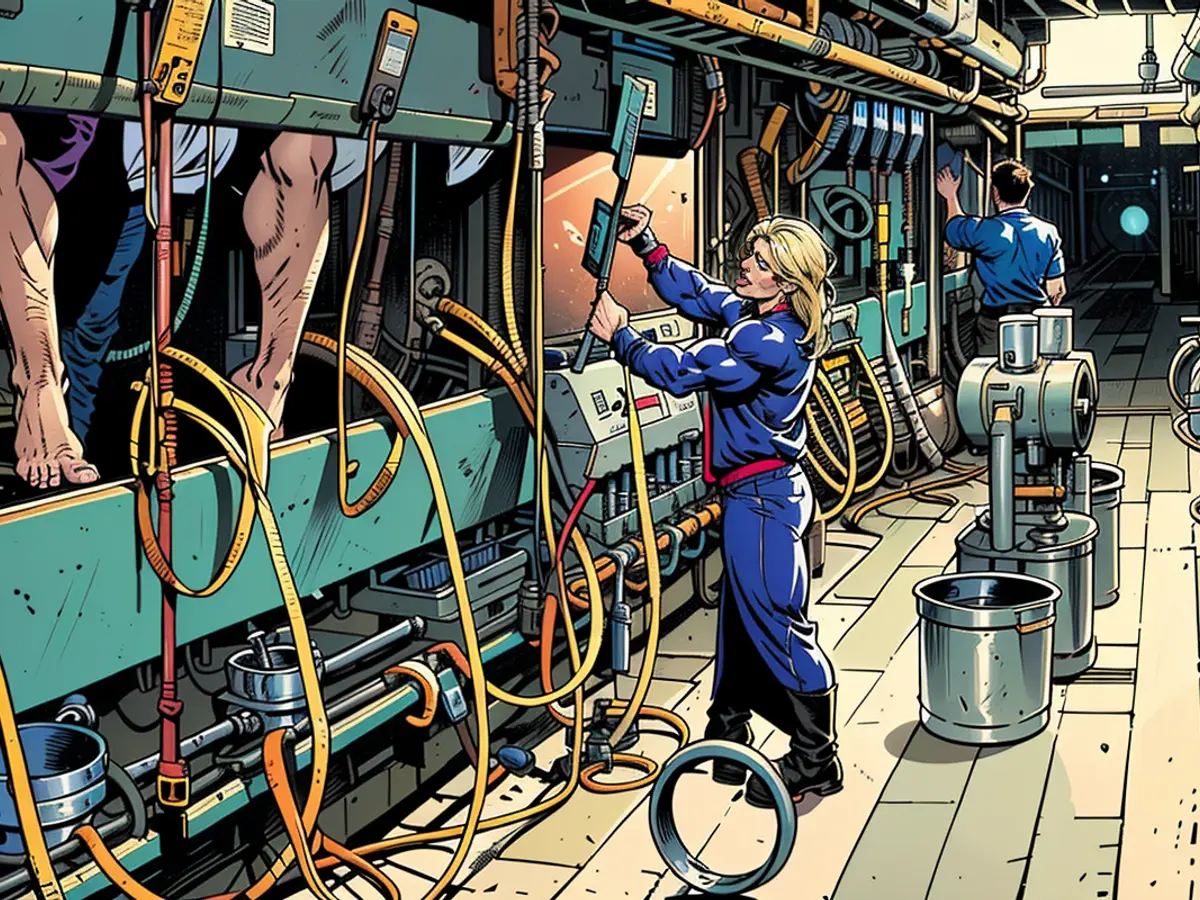Milking machines can transmit bird flu to humans
A new study in the US reveals that the Avian Flu virus can remain infectious on milk machines for hours. The H5N1 strain can not only infect cows but also employees in dairy farms. The authors of the study urgently recommend protective measures.
In the US, the Avian Flu of type H5N1 is spreading further. The Centers for Disease Control and Prevention (CDC) has already recorded four transmissions to humans, three of whom were infected in dairy farms. The increased risk of transmission there is confirmed by a study pre-published on "MedRxiv" by the University of Pittsburgh School of Medicine and Emory University in Emerging Infectious Diseases.
"Our data show that the surfaces of milking machines can remain contaminated for a long time, increasing the risk of transmission from an infected animal to a person," says lead author Valerie Le Sage. Such infections, in turn, could enable H5 viruses to adapt through viral evolution and gain the ability to transmit from person to person, according to the CDC.
Experts like Charité Virologist Christian Drosten see in such a development a potential trigger for a future pandemic. Recently, experts criticized in an expert report that the world is still not prepared for this. "Should H5N1 transmit from person to person, the world would likely be overwhelmed again," warned the former New Zealand Prime Minister and study co-author Helen Clark. An Avian Flu pandemic could "potentially be even more catastrophic than Corona."
Employees in dairy farms can come into contact with contaminated milk in several situations. For example, this can happen during so-called pre-milking, where the first milk streams are expressed by hand. There is also the risk that employees are splashed with milk when the collection cups of the machines automatically detach at the end of the milking process.
Milking at Eye Level
Remarkably, milking often takes place at eye level for people, write the scientists. This increases the risk that infectious milk comes into contact with the mucous membranes of the employees.
To find out how long Avian Flu viruses can survive on milking machines, researchers examined the stability of infectious influenza virus particles in unpasteurized milk droplets on metal and rubber parts, from which milk buckets and hoses of the machines are made. It was found that H5N1 remains stable on stainless steel for at least an hour and on rubber for even up to three hours.
The scientists urgently recommend taking measures to reduce the risk for workers and minimize transmission between animals. Workers should wear face and eye protection as well as masks, they advise. To reduce transmissions between cows, the milking machine teats should be disinfected before each changeover.
In light of the study's findings, implementing education programs about the risks and necessary precautions around Avian Flu viruses could be crucial for dairy farm employees. Failure to do so could contribute to the adaptation of H5N1 viruses, potentially leading to pandemics as severe as the one caused by COVID-19.
Given the long survival time of H5N1 on milk machine surfaces, regular sanitization and proper use of personal protective equipment are essential to mitigate the risk of viral transmission.








